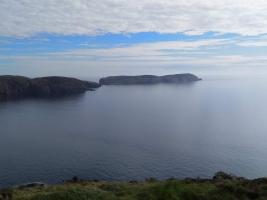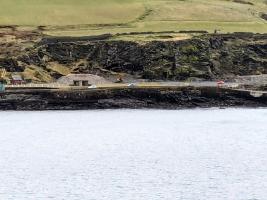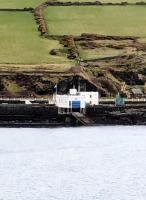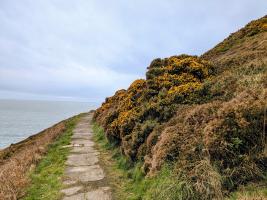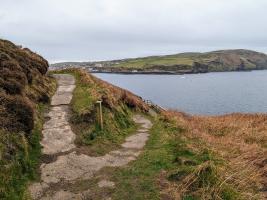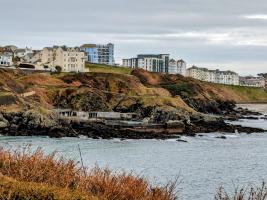Welcome to Bradda Head Nature Trail
The purpose of trail is to explain some of the more interesting things which abound in the Glen.
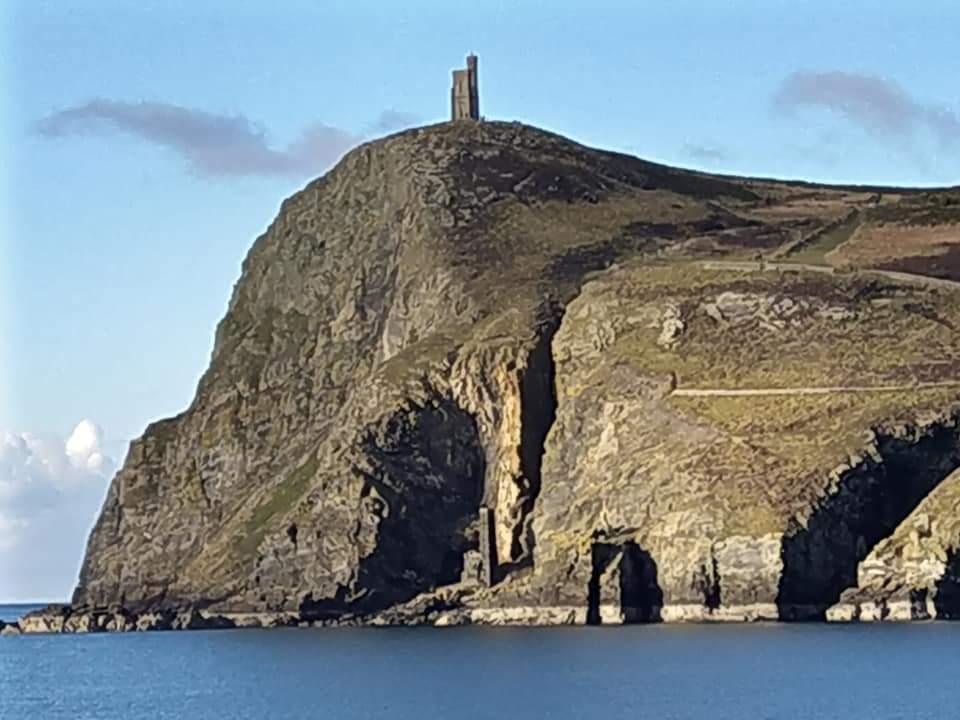
Where to Start
Look out for numbered markers along the path.
Please remember that plants, animals and birds can easily be disturbed; so please keep to the path and leave the Glen so that others can also enjoy it too.
The numbered paragraphs correspond to the numbers on the front cover. Number 1 is at the entrance to the Glen at Spaldrick, but you could join the main path by approaching it along the Coastal Path from the Promenade.
It is mainly easy going and not too far even for the less energetic; but those who wish to do so, may continue after number 10 to the Headland, Milner Tower and beyond.
You need about an hour to follow the trail; the approximate number of paces is given to help you estimate the distance from one point to the next.
The energetic can start their walk to Bradda Head and Milner Tower from the north end of the Upper Promenade in Port Erin. The route follows the delightful cliff walk laid out in the resorts victorian heyday.
About Port Erin
Port Erin was formerly a fishing village and still maintains its close links with the sea, but today it has developed into a modern holiday resort. It nestles between the broad headland of Bradda and the Mull hills. Port Erin has a beach of golden sand and is ideal for safe bathing. The surrounding hills provide delightful walks in natural and unspoiled scenery. At every turn new vistas surprise and delight the eye and soothe the mind.
‘But Bradda still has
lichens worth the seeing
And thunder in her caves - thank God!’
T. E. Brown
Much of the vegetation now growing along the walks is semi-natural although there was originally considerable planting. One uncommon plant for the Isle of Man that you may find on the grassy broughs near the former swimming pool is a St. Johns wort, Hypericum perloratum.
Species include examples of three hedging shrubs, which although tender in inland districts, flourish in the Island’s equable climate:
- Fuchsia - named after a German called Fuchs, introduced into Britain about 1 800.
- Bush Veronica (Hebe).
- Escallonia - easily recognised by its sticky, aromatic leaves and pink flowers.
The place names of the Isle of Man include some of Celtic origin, such as Traie Veg (Little shore) and Traie Vane (White shore), the two smaller bays. Others were given by the Norsemen - Spaldrick has evolved from Old Norse for the square bay, the last syllable being originally VIK as in Fleshwick, a little to the North. Such names will often have been given to places where ships could readily be beached.
Related pages...
Bradda Head Nature Trail - Information Point Number 1
more Is at the Arch above the entrance to Bradda Glen
Bradda Head Nature Trail - Information Point Number 2
more Where the main path is joined by the coastal path
Bradda Head Nature Trail - Information Point Number 3
more At the bridge over the small stream
Bradda Head Nature Trail - Information Point Number 4
Bradda Head Nature Trail - Information Point Number 8
Bradda Head Nature Trail - Information Point Number 11
back to page above this...
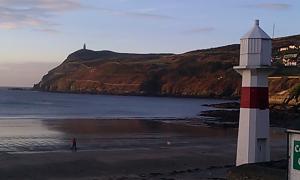
Bradda Head Nature Trail
back Originally created by the Rotary Club of Rushen & Western Mann as one its first community projects in 1973, the Club in partnership with the Rushen Heritage Trust has refurbished the trail in 2024.
